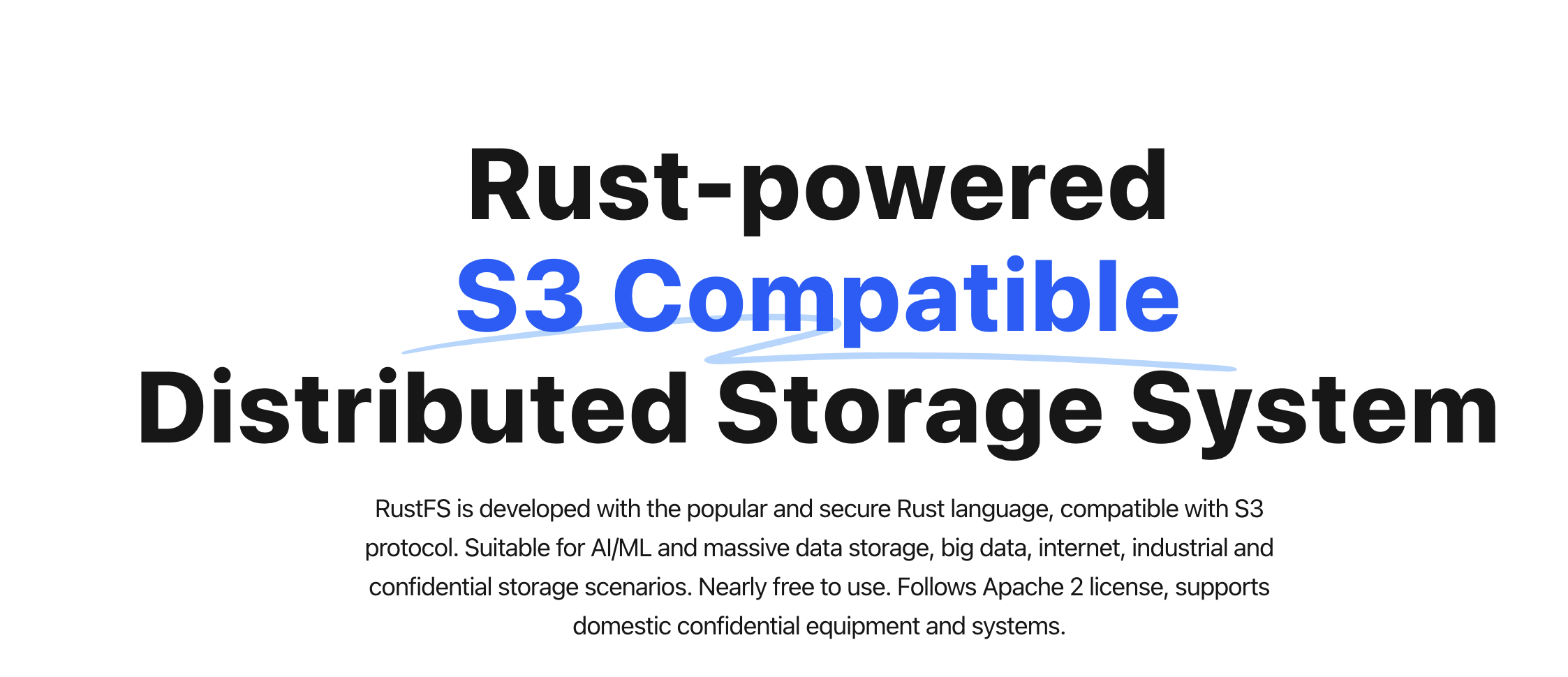引言背景
在物联网(IoT)时代,设备间的轻量级、可靠通信是构建智能系统的核心。MQTT(Message Queuing Telemetry Transport)作为一种基于发布/订阅模型的协议,以其高效、低带宽占用和支持多种 QoS(服务质量)等级的特性,成为 IoT 领域的首选通信协议。Rust 语言凭借其高性能、内存安全和并发处理能力,逐渐在系统级编程和 IoT 开发中崭露头角。rumqttc 是 Rust 生态中一个功能强大、异步优先的 MQTT 客户端库,专为资源受限的设备设计,兼顾简单性、鲁棒性和高性能。
本文将为您提供一份详细的 rumqttc 实战指南,涵盖 MQTT 协议的理论基础、rumqttc 的核心功能,以及通过同步和异步方式实现 MQTT 通信的完整示例代码。我们将从基础配置到高级特性(如 MQTT 5.0 的用户属性、主题别名),结合实际场景,带您深入探索 Rust 与 MQTT 的完美结合。无论您是 Rust 新手还是 IoT 开发者,本文都将为您提供清晰的理论支持和可直接运行的代码示例,助您快速上手 rumqttc,打造高效的 IoT 应用。
一、MQTT 协议理论基础
1.1 MQTT 协议概述
MQTT 是一种轻量级、基于 TCP/IP 的发布/订阅协议,最初由 IBM 的 Andy Stanford-Clark 和 Cirrus Link 的 Arlen Nipper 在 1999 年开发,适用于低带宽、高延迟或不可靠的网络环境。其核心特点包括:
- 发布/订阅模型:客户端通过主题(Topic)向经纪人(Broker)发布消息,其他订阅了该主题的客户端会收到消息,实现解耦通信。
- 服务质量(QoS):
- QoS 0:至多一次,消息可能丢失。
- QoS 1:至少一次,可能重复。
- QoS 2:恰好一次,确保消息可靠传递。
- 轻量级:消息头最小仅 2 字节,适合资源受限设备。
- 会话保持:支持持久会话,客户端断线重连后可恢复订阅。
- 遗嘱消息(Last Will):客户端异常断开时,Broker 可发布预设消息。
1.2 MQTT 5.0 新特性
相比 MQTT 3.1.1,MQTT 5.0 引入了多项改进,rumqttc 已全面支持这些特性:
- 消息过期间隔:为发布消息设置生存时间(TTL)。
- 用户属性:允许在消息中附加自定义键值对。
- 主题别名:用数字别名替代长主题,减少带宽占用。
- 请求 - 响应模式:支持指定响应主题,实现类似 RPC 的通信。
- 连接属性:增强连接时的配置选项,如最大包大小。
1.3 MQTT 通信流程
- 连接:客户端通过 CONNECT 报文连接到 Broker,指定客户端 ID、用户名、密码等。
- 订阅:客户端通过 SUBSCRIBE 报文订阅主题,指定 QoS 等级。
- 发布:客户端通过 PUBLISH 报文发布消息到主题。
- 断开:客户端通过 DISCONNECT 报文主动断开,或 Broker 检测到连接中断。
1.4 适用场景
- 物联网设备:传感器数据采集、远程控制。
- 实时通信:消息推送、状态同步。
- 低带宽环境:工业自动化、车联网。
二、rumqttc 核心功能与优势
2.1 rumqttc 简介
rumqttc 是 Rust 生态中的 MQTT 客户端库,隶属于 rumqtt 项目(由 Bytebeam 维护),提供同步和异步 API,支持 MQTT 3.1.1 和 5.0 协议。其主要特点包括:
- 异步优先:基于 Tokio 异步运行时,适合高并发场景。
- 同步支持:提供阻塞式 API,方便简单应用。
- 高性能:纯 Rust 实现,内存安全且高效。
- 鲁棒性:内置事件循环(EventLoop)处理连接重试、消息确认等。
- 灵活性:支持 MQTT 5.0 高级特性,如用户属性、主题别名。
2.2 核心组件
- MqttOptions:配置客户端选项,如 Broker 地址、端口、保持活动时间(Keep-Alive)、遗嘱消息等。
- Client:同步客户端,用于阻塞式操作。
- AsyncClient:异步客户端,结合 Tokio 运行时。
- EventLoop:事件循环,处理连接状态、消息收发。
- Connection:同步模式下管理通知迭代。
- PublishProperties(MQTT 5.0):设置消息属性,如过期间隔、用户属性。
2.3 依赖安装
在 Rust 项目中添加 rumqttc 和相关依赖:
[dependencies]
rumqttc = "0.24.0"
tokio = { version = "1", features = ["full"] }
pretty_env_logger = "0.5"三、实战示例:基于 rumqttc 的 MQTT 客户端开发
以下通过同步和异步方式实现 MQTT 客户端,连接到 EMQX 提供的免费公共 Broker(broker.emqx.io:1883),实现订阅和发布功能。
3.1 示例 1:同步 MQTT 客户端
同步客户端适合简单的单线程应用,阻塞式 API 易于理解。
use rumqttc::{Client, MqttOptions, QoS};
use std::thread;
use std::time::Duration;
fn main() {
// 配置 MQTT 选项
let mut mqttoptions = MqttOptions::new("sync-client", "broker.emqx.io", 1883);
mqttoptions.set_keep_alive(Duration::from_secs(5));
// 创建客户端和连接
let (mut client, mut connection) = Client::new(mqttoptions, 10);
// 订阅主题
client.subscribe("test/topic", QoS::AtLeastOnce).unwrap();
// 在新线程中发布消息
thread::spawn(move || {
for i in 0..10 {
let payload = format!("Message {}", i);
client
.publish("test/topic", QoS::AtLeastOnce, false, payload.as_bytes())
.unwrap();
thread::sleep(Duration::from_millis(100));
}
});
// 迭代处理连接通知
for (i, notification) in connection.iter().enumerate() {
println!("Notification {}: {:?}", i, notification);
if i >= 9 {
break;
}
}
}运行步骤:
- 创建新 Rust 项目:
cargo new mqtt-sync-example
cd mqtt-sync-example- 更新
Cargo.toml,添加依赖。 - 保存代码到
src/main.rs。 - 运行:
cargo run输出示例:
Notification 0: Ok(Incoming(ConnAck))
Notification 1: Ok(Outgoing(Subscribe(1)))
Notification 2: Ok(Incoming(SubAck(1)))
Notification 3: Ok(Incoming(Publish(Publish { topic: "test/topic", payload: b"Message 0", ... })))
...说明:
- MqttOptions:设置客户端 ID、Broker 地址、端口和保持活动时间。
- Client::new:创建同步客户端和连接,容量为 10(消息队列大小)。
- subscribe:订阅
test/topic,QoS 1。 - publish:在新线程中发布 10 条消息。
- connection.iter:迭代处理 Broker 的通知(如连接确认、消息接收)。
3.2 示例 2:异步 MQTT 客户端
异步客户端利用 Tokio 运行时,适合高并发场景。
use rumqttc::{AsyncClient, MqttOptions, QoS};
use tokio::{task, time};
use std::error::Error;
use std::time::Duration;
#[tokio::main]
async fn main() -> Result<(), Box<dyn Error>> {
pretty_env_logger::init();
// 配置 MQTT 选项
let mut mqttoptions = MqttOptions::new("async-client", "broker.emqx.io", 1883);
mqttoptions.set_keep_alive(Duration::from_secs(5));
// 创建异步客户端和事件循环
let (client, mut eventloop) = AsyncClient::new(mqttoptions, 10);
// 订阅主题
client.subscribe("test/topic", QoS::AtLeastOnce).await?;
// 在新任务中发布消息
task::spawn(async move {
for i in 0..10 {
let payload = format!("Async Message {}", i);
client
.publish("test/topic", QoS::AtLeastOnce, false, payload.as_bytes())
.await
.unwrap();
time::sleep(Duration::from_millis(100)).await;
}
});
// 轮询事件循环
while let Ok(notification) = eventloop.poll().await {
println!("Received: {:?}", notification);
}
Ok(())
}运行步骤:
- 创建新 Rust 项目:
cargo new mqtt-async-example
cd mqtt-async-example- 更新
Cargo.toml,添加依赖。 - 保存代码到
src/main.rs。 - 运行:
cargo run输出示例:
Received: Incoming(ConnAck)
Received: Outgoing(Subscribe(1))
Received: Incoming(SubAck(1))
Received: Incoming(Publish(Publish { topic: "test/topic", payload: b"Async Message 0", ... }))
...说明:
- #[tokio::main]:使用 Tokio 运行时。
- AsyncClient::new:创建异步客户端和事件循环。
- subscribe 和 publish:使用
await进行异步操作。 - eventloop.poll:轮询事件循环,处理 Broker 通知。
3.3 示例 3:MQTT 5.0 高级特性
以下示例展示 MQTT 5.0 的用户属性和消息过期间隔。
use rumqttc::v5::{AsyncClient, MqttOptions, QoS};
use rumqttc::v5::mqttbytes::v5::PublishProperties;
use tokio::{task, time};
use std::error::Error;
use std::time::Duration;
#[tokio::main]
async fn main() -> Result<(), Box<dyn Error>> {
pretty_env_logger::init();
// 配置 MQTT 选项
let mut mqttoptions = MqttOptions::new("mqtt5-client", "broker.emqx.io", 1883);
mqttoptions.set_keep_alive(Duration::from_secs(5));
// 创建异步客户端
let (client, mut eventloop) = AsyncClient::new(mqttoptions, 10);
// 订阅主题
client.subscribe("test/mqtt5", QoS::AtLeastOnce).await?;
// 发布消息,带用户属性和过期间隔
task::spawn(async move {
let mut properties = PublishProperties::default();
properties.user_properties = vec![("key".to_string(), "value".to_string())];
properties.message_expiry_interval = Some(30); // 消息过期时间 30 秒
for i in 0..5 {
let payload = format!("MQTT5 Message {}", i);
client
.publish_with_properties(
"test/mqtt5",
QoS::AtLeastOnce,
false,
payload.as_bytes(),
properties.clone(),
)
.await
.unwrap();
time::sleep(Duration::from_millis(100)).await;
}
});
// 轮询事件循环
while let Ok(notification) = eventloop.poll().await {
println!("Received: {:?}", notification);
}
Ok(())
}运行步骤:同异步示例。
说明:
- PublishProperties:设置用户属性(
key=value)和消息过期间隔(30 秒)。 - publish_with_properties:支持 MQTT 5.0 属性发布。
四、进阶技巧与优化
4.1 连接重试
rumqttc 的事件循环自动处理连接断开和重试,可通过 MqttOptions::set_max_packet_size 和 set_credentials 配置更鲁棒的连接:
mqttoptions.set_credentials("username", "password");
mqttoptions.set_max_packet_size(1024 * 1024); // 最大包大小 1MB4.2 遗嘱消息
设置遗嘱消息,确保客户端异常断开时通知其他客户端:
mqttoptions.set_last_will(LastWill {
topic: "test/will".into(),
message: b"Client disconnected".to_vec(),
qos: QoS::AtLeastOnce,
retain: false,
});4.3 主题别名(MQTT 5.0)
减少带宽占用:
mqttoptions.set_topic_alias_max(10); // 最大别名数
properties.topic_alias = Some(1); // 使用别名4.4 性能优化
- 异步优先:在高并发场景下使用
AsyncClient。 - 事件循环分离:将
eventloop.poll放入独立任务,避免阻塞主线程。 - QoS 选择:根据场景选择合适的 QoS(如 QoS 0 用于非关键数据)。
五、常见问题与排查
- 连接失败:
- 检查 Broker 地址和端口(
broker.emqx.io:1883)。 - 确认网络可用性:
ping broker.emqx.io- 检查用户名/密码是否正确。
- 消息丢失:
- 确保 QoS 等级匹配(发布和订阅需一致)。
- 检查 Broker 是否支持持久会话。
- 性能问题:
- 调整
MqttOptions::set_keep_alive(默认 5 秒)。 - 增大事件循环容量(
Client::new的第二个参数)。
- 调试日志:
- 使用
pretty_env_logger输出详细日志:
export RUST_LOG=debug
cargo run六、参考资料
- EMQX 官方文档:https://www.emqx.io/docs/zh/v5.1.0/
- rumqttc 官方文档:https://docs.rs/rumqttc/latest/rumqttc/
- rumqtt GitHub 仓库:https://github.com/bytebeamio/rumqtt[](https://github.com/bytebeamio/rumqtt "" "")
- 如何在 Rust 中使用 MQTT 和 rumqttc:https://www.emqx.com/zh/blog/how-to-use-mqtt-in-rust[](https://www.emqx.com/en/blog/how-to-use-mqtt-in-rust "" "")
- MQTT 协议教程:https://www.hivemq.com/mqtt/[](https://www.hivemq.com/blog/how-to-get-started-with-mqtt/ "" "")
- MQTTX 客户端:https://mqttx.app/[](https://mqttx.app/docs/learning-resources "" "")
- Rust 异步编程:https://rust-lang.github.io/async-book/
- MQTT 5.0 新特性:https://www.emqx.com/zh/blog/mqtt-5-0-new-features[](https://www.reddit.com/r/rust/comments/134mh7t/rumqttc_0210_released_with_mqtt5_support/ "" "")
- Rust 和 MQTT 项目实践:https://nikolas.blog/how-to-use-rust-and-mqtt-in-your-next-project/[](https://nikolas.blog/how-to-use-rust-and-mqtt-in-your-next-project/ "" "")
七、总结
通过本文,您已全面掌握了 MQTT 协议的理论基础、rumqttc 的核心功能,以及在 Rust 中实现 MQTT 通信的实战技巧。从同步客户端的简单实现到异步客户端的高并发处理,再到 MQTT 5.0 的高级特性,rumqttc 展现了 Rust 在 IoT 开发中的强大潜力。结合提供的示例代码,您可以快速构建可靠、高效的 MQTT 应用。
下一步,尝试将 rumqttc 集成到您的 IoT 项目中,探索更多高级功能(如 TLS 加密、集群模式)。如有任何问题,请随时提供日志或代码,我将为您提供进一步支持!让 Rust 和 MQTT 为您的物联网世界注入新的活力!
版权声明:自由转载-非商用-非衍生-保持署名(创意共享3.0许可证)

![Rust 语言中与编译器的默契对话:善用 #[inline] 提示的艺术](https://static-rs.bifuba.com/images/posts/pexels-marija-piliskic-2155438514-33754558.jpg-slimming.webp)



